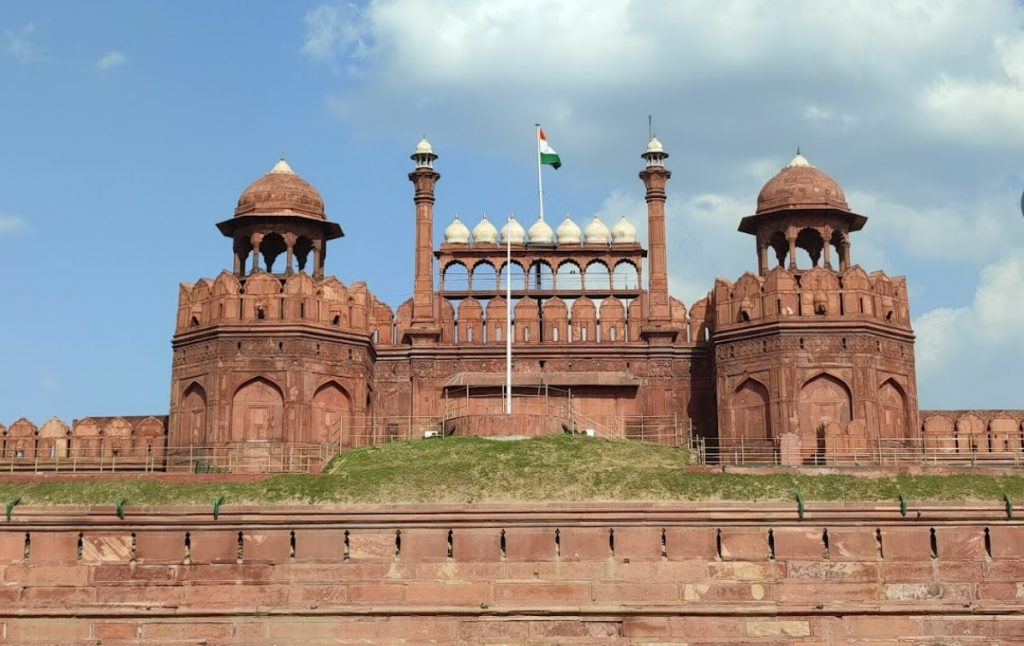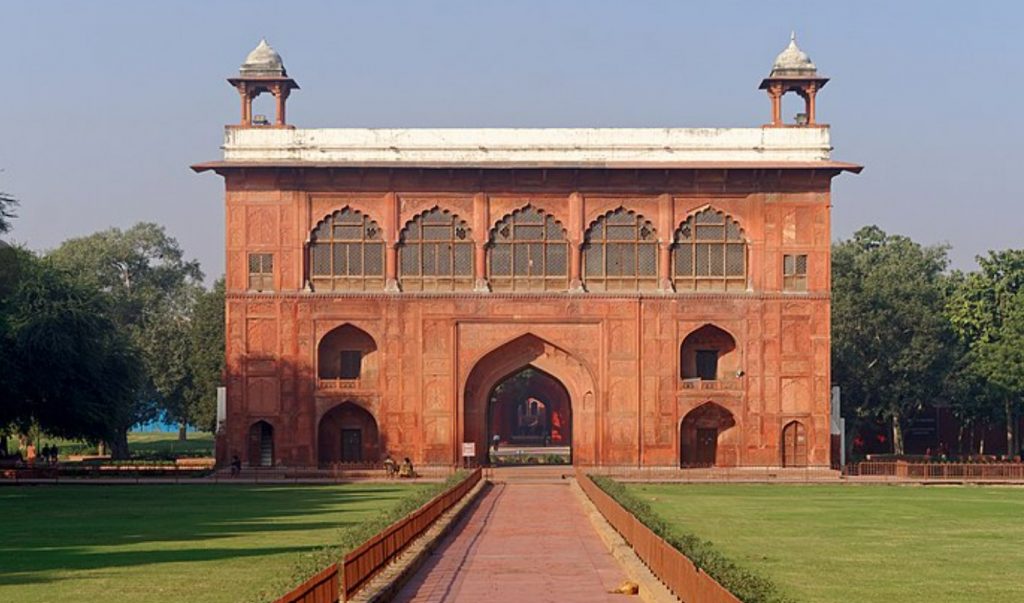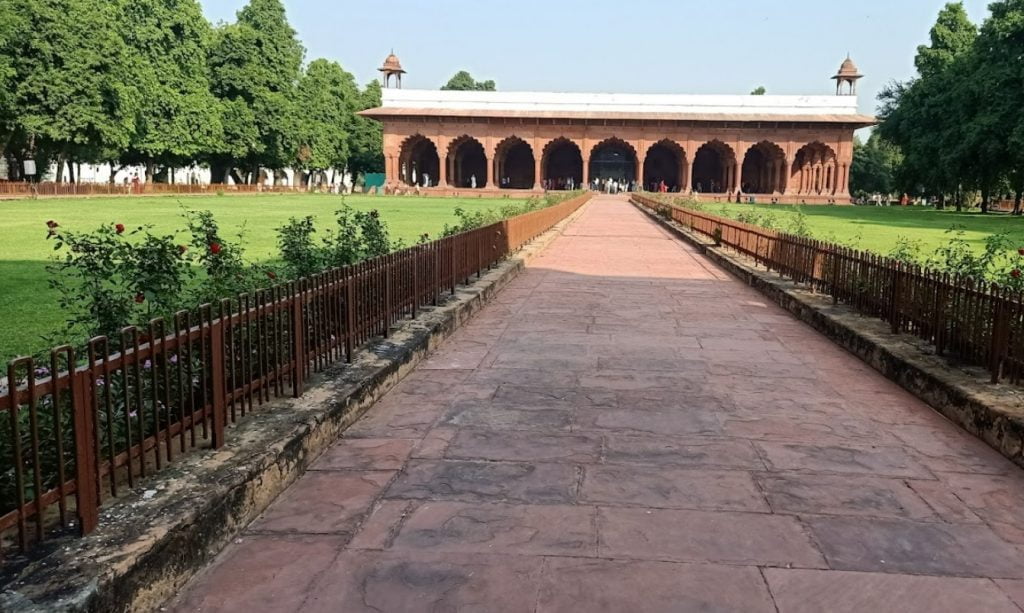Contents
About
The Red Fort, also known as the “Lal Qila,” is a historic fort located in the city of Delhi, India. The fort was built by the Mughal Emperor Shah Jahan in the mid-17th century and is considered one of the most important architectural and cultural landmarks in the country. It is a UNESCO World Heritage Site and is the site of the annual Independence Day parade. The fort is also a popular destination for film shoots and music videos, as its grand architecture and rich history provides a perfect backdrop. Visitors can also take a guided tour of the fort, which provides detailed information about its history, architecture, and cultural significance.

Architecture
The Red Fort in Delhi is an excellent example of Mughal architecture and is considered one of the most important architectural landmarks in India. The fort is octagonal in shape and is surrounded by high walls. The fort contains several palaces, courtyards, and gardens, all of which were designed to reflect the grandeur and opulence of the Mughal court. The fort is adorned with intricate carvings, frescoes and inlaid marble. The most famous architectural features of the Red Fort are the Diwan-i-Aam, or the “Hall of Public Audiences,” the Diwan-i-Khas, or the “Hall of Private Audiences” and the famous “Pearl Mosque.” These structures are adorned with intricate carvings, frescoes and inlaid marble, showcasing the grandeur of Mughal architectural style.
Political Significance
The Red Fort in Delhi holds great political significance in India’s history. It was from the ramparts of the Red Fort that India’s first Prime Minister Jawaharlal Nehru gave his famous “Tryst with Destiny” speech on August 15th, 1947, in which he declared India’s independence from British rule. The Red Fort is also the site of the annual Independence Day parade, where the Indian Prime Minister hoists the national flag and delivers a speech to the nation. This event is attended by thousands of people and is a symbol of national unity and pride. This event is watched live by millions of people across the country, emphasizing the importance of Red Fort in India’s political history. Additionally, The Red Fort is also a popular destination for film shoots and music videos, as its grand architecture and rich history provides a perfect backdrop for various projects.

History
The Red Fort, also known as the “Lal Qila,” is a historic fort located in the city of Delhi, India. The fort was built by the Mughal Emperor Shah Jahan in the mid-17th century as his new imperial palace. The construction of the Red Fort began in 1639 and was completed in 1648. The fort is built of red sandstone, which is why it is called the “Red Fort.” The fort is also an important center of Islamic culture and tradition and is considered an important site for Islamic studies and research.
Interesting Facts
- The Red Fort, also known as the “Lal Qila,” was built by Mughal Emperor Shah Jahan in the mid-17th century as his new imperial palace.
- The construction of the Red Fort began in 1639 and took 9 years to complete.
- The fort is made of red sandstone, which is why it is called the “Red Fort.”
- The fort’s walls are over 33 meters (108 feet) high and are surrounded by a moat, which was once filled with water to provide an extra layer of security.
- The Red Fort is home to several palaces, courtyards, and gardens, including the Diwan-i-Aam (Hall of Public Audiences), the Diwan-i-Khas (Hall of Private Audiences), and the famous “Pearl Mosque.”
- The Red Fort is also known for its intricate carvings and frescoes, as well as its inlaid marble work.
- The Red Fort is also the site of the annual Independence Day parade, where the Indian Prime Minister hoists the national flag and delivers a speech to the nation.
- The Red Fort is also a UNESCO World Heritage Site.
- The fort has been a witness of many historical events and has been used as a residence by various Emperors of Mughal Empire.
- The Red Fort is a popular tourist destination and attracts millions of visitors every year, making it one of the most visited tourist attraction in India.

Red Fort Tickets Booking
Time Slots available for booking are :-
- Forenoon
- Afternoon
Tickets can be booked under 4 National Categories :-
- Indian
- Foreigner
- SAARC Country Citizens
- BIMSTEC Country Citizens
Tickets are available for following preferences :-
- Red Fort
- Red Fort and Museum
Id Cards required for online booking are :-
- Passport
- Pan Card
- Driving License
- Voter Card
Timings & Entry Fee
Red Fort is open every day of the week except Monday. Guests can visit the Red Fort between the hours of 9:30 am and 4:30 pm. Delhi is at its most enjoyable to explore from October to February. After dark, you may enjoy a light and sound display that’s subtitled in both English and Hindi. The visitation hours for Red Fort for the light and sound show vary according to months and the language chosen. Before you make plans to go, be sure you know what time it starts and ends.
Although the area is large, the buildings inside are not as large as this Fort appears from the outside. One can see a glimpse of the opulent and royal life that the ancient emperors led. If someone wants to see numerous topics in depth, it takes about 4 hours. You can buy the ticket from the entry gate using QR scan too. There is a large rush on weekends and holidays. Avoid even buying offline tickets from the window desk because the queues are so long.
Address: Netaji Subhash Marg, Lal Qila, Chandni Chowk, Delhi 110006
| Entry Fee (Indian) Red Fort | Rs 35 |
| Entry Fee (Foreigner) Red Fort | Rs 550 |
| Entry Fee (SAARC, BIMSTEC) Red Fort | Rs 35 |
| Entry Fee (Indian) Red Fort & Museum | Rs 56 |
| Entry Fee (Foreigner ) Red Fort & Museum | Rs 870 |
| Entry Fee (SAARC, BIMSTEC) Red Fort & Museum | Rs 56 |
| Opening Hours | 9.30 am to 4.30 pm |
| Closed on | Monday |
How to Reach
| Nearest Metro Station | Red Fort Metro Station |
| Nearest Bus Stand | Red Fort Bus Station |
| Nearest Airport | T1, T3 Airport |
| Nearest Railway Station | Old Delhi Railway Station |
Best Time to Visit
Recommended time to visit Red Fort is between November to March when it is winter season and it is pleasant during the bright sunny days in Delhi.
Leave a Reply